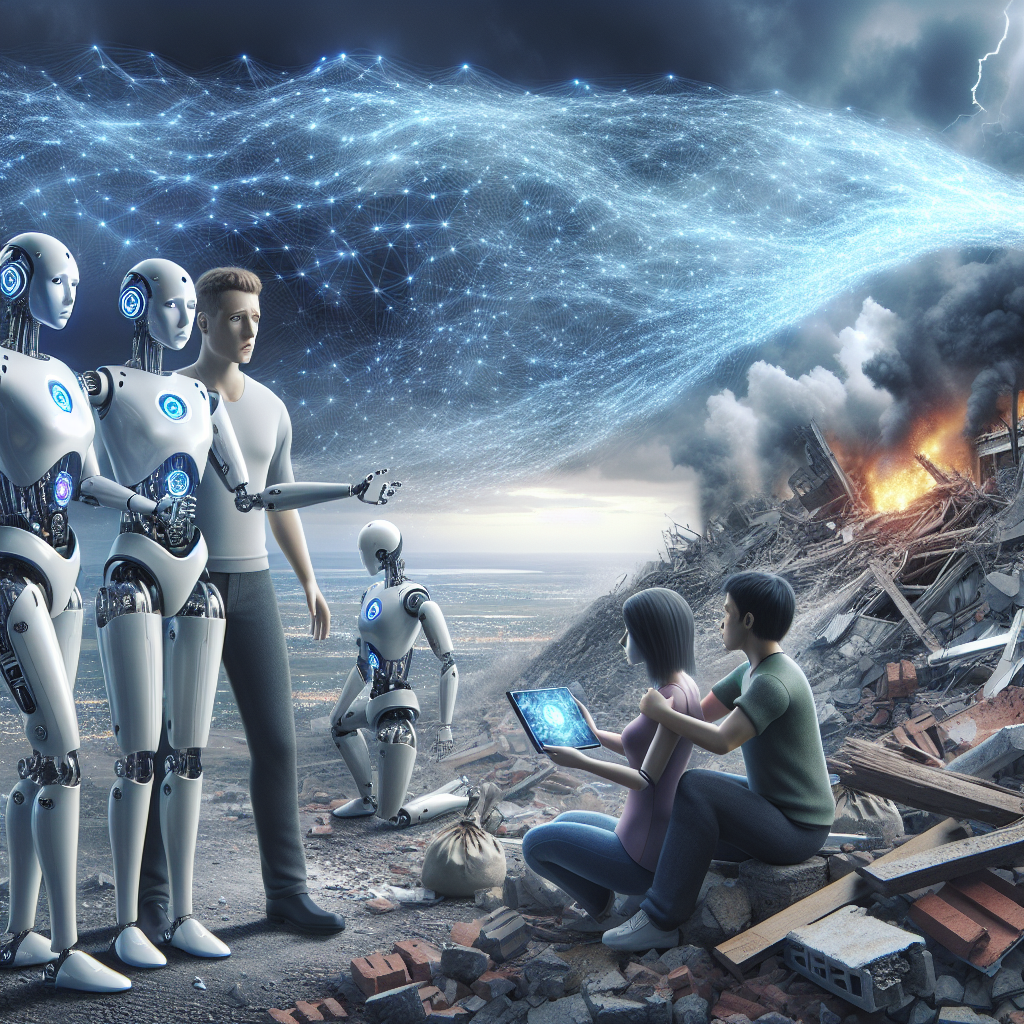The Role of Conversational AI in Crisis Response and Disaster Relief
In times of crisis and disaster, quick and efficient communication is vital. This is where conversational AI technology comes into play. Conversational AI, also known as chatbots or virtual assistants, can provide immediate and personalized responses to people in need during emergencies. From natural disasters like hurricanes and earthquakes to public health emergencies like pandemics, conversational AI has proven to be a valuable tool in crisis response and disaster relief efforts.
How Conversational AI Works in Crisis Response
Conversational AI technology uses natural language processing and machine learning algorithms to understand and respond to human queries. In the context of crisis response, these chatbots can be programmed to provide real-time information, answer frequently asked questions, and connect people to resources and services. For example, during a hurricane, a conversational AI chatbot can provide updates on evacuation routes, shelter locations, and emergency contact numbers.
One of the key benefits of conversational AI in crisis response is its ability to scale quickly and handle a large volume of inquiries. Unlike human operators, chatbots can work 24/7 without getting tired or overwhelmed. This means that people affected by a disaster can get the information they need at any time, even during off-peak hours.
Another advantage of conversational AI in crisis response is its consistency and accuracy. Chatbots are programmed with up-to-date information from reliable sources, which helps prevent the spread of misinformation and confusion. This can be particularly important during public health emergencies, where accurate information can save lives.
Furthermore, conversational AI can be integrated with other technologies like geolocation services and social media platforms to provide more personalized and targeted responses. For instance, a chatbot can use a person’s location to recommend nearby shelters or emergency services. It can also monitor social media channels for relevant keywords and hashtags to proactively reach out to people in need.
Examples of Conversational AI in Crisis Response
There have been several successful implementations of conversational AI technology in crisis response and disaster relief efforts. One notable example is the use of chatbots during the COVID-19 pandemic. Many government agencies, healthcare providers, and non-profit organizations deployed chatbots to provide information on symptoms, prevention measures, testing locations, and vaccination appointments. These chatbots helped alleviate the burden on call centers and healthcare workers, allowing them to focus on critical tasks.
Another example is the use of chatbots during natural disasters like wildfires and floods. In 2018, the Red Cross launched a chatbot called “Florence” to provide updates and assistance to people affected by Hurricane Florence in the United States. The chatbot helped people find shelters, report emergencies, and donate to relief efforts. It also collected data on the needs of affected communities, which informed the Red Cross’s response strategy.
In addition to crisis response, conversational AI technology has also been used in disaster preparedness and recovery efforts. For instance, the United Nations Development Programme (UNDP) developed a chatbot called “Ask Maya” to help communities in the Philippines prepare for and recover from natural disasters. The chatbot provided information on evacuation procedures, emergency kits, and livelihood opportunities. It also connected people to government agencies and non-profit organizations for additional support.
FAQs about Conversational AI in Crisis Response and Disaster Relief
1. How can I access a conversational AI chatbot during a crisis?
Most organizations that deploy conversational AI chatbots during crises provide access through their websites, mobile apps, and social media channels. You can usually find a chatbot icon or link on the organization’s homepage or social media profiles. Clicking on the icon or link will launch the chatbot, where you can ask questions and get assistance.
2. Is conversational AI chatbot technology secure and reliable during emergencies?
Yes, conversational AI chatbot technology is designed to be secure and reliable during emergencies. Organizations that deploy chatbots for crisis response use encryption and authentication protocols to protect user data and ensure the accuracy of information. Additionally, chatbots are regularly updated with the latest information from trusted sources to provide accurate and timely responses.
3. Can conversational AI chatbots provide real-time updates during a crisis?
Yes, conversational AI chatbots can provide real-time updates during a crisis. Chatbots are programmed to monitor news sources, social media channels, and government alerts for the latest information on emergencies. They can then relay this information to users in a timely manner, helping them stay informed and safe.
4. How can I report an emergency or request assistance through a conversational AI chatbot?
Most conversational AI chatbots have a feature that allows users to report emergencies or request assistance. This feature typically involves a series of prompts that guide users through the reporting process. Users can provide details about their location, the type of emergency, and any additional information that may be relevant. The chatbot will then connect them to the appropriate authorities or services for assistance.
5. Can conversational AI chatbots provide emotional support during a crisis?
While conversational AI chatbots are not equipped to provide the same level of emotional support as human counselors or therapists, they can offer empathy and reassurance to users in distress. Chatbots can be programmed with responses that acknowledge the user’s feelings and provide encouragement. They can also offer resources for mental health support and self-care during a crisis.
Conclusion
Conversational AI technology has emerged as a valuable tool in crisis response and disaster relief efforts. Its ability to provide real-time information, personalized assistance, and scalable communication makes it an essential asset during emergencies. As the technology continues to evolve and improve, we can expect to see more organizations leveraging conversational AI to enhance their crisis response strategies and better serve communities in need. By harnessing the power of chatbots and virtual assistants, we can build more resilient and responsive systems for addressing crises and disasters around the world.

